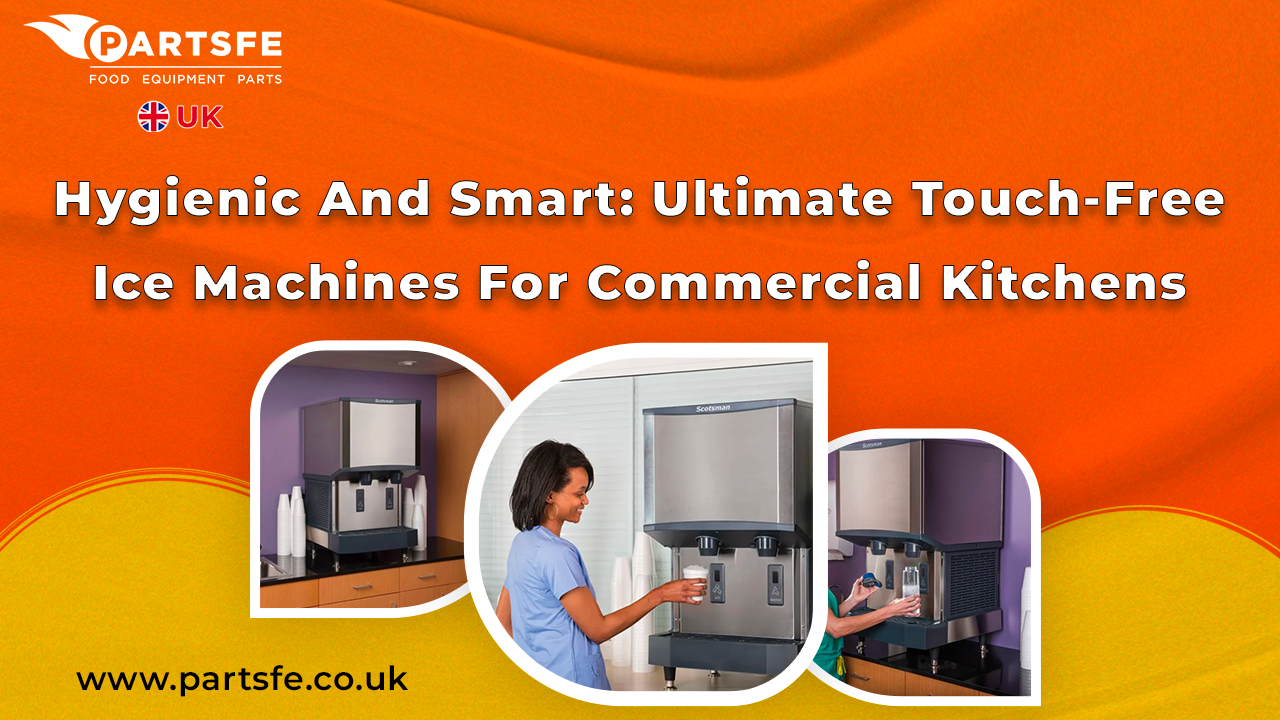Hygienic And Smart: Ultimate Touch-Free Ice Machines For Commercial Kitchens
Hygiene standards in commercial kitchens must be of the highest standard in the fast-paced environment. Proper hygiene is directly related to food safety, customer satisfaction, and the success of an establishment. With the pandemic resulting in increased attention on sanitation methods, businesses need to shift to adjust to evolving consumer confidence and regulatory compliance. This is especially the case in ice production and dispensing, which many times are not viewed as a possible source of contamination.
Commercial kitchens rely on ice machines, which are often viewed as facilitators of cold beverages, to play an important role in their hygiene ecosystem. Recently, touch-free ice machines have appeared as a modern solution to health issues and to increase the operational efficiency. In this article, we will discuss why hygiene is important in food service establishments, what are the advantages of touch-free ice machines, what factors to consider when choosing one for your kitchen, some of the best ice machines available today, and how to maintain your ice machine.
The Importance of Hygiene in Commercial Kitchens
There are several reasons why hygiene in commercial kitchens is important:
-
Food safety: Foodborne illnesses are a risk that no establishment can afford to overlook, and contaminated ice can result in them. Pathogens can be carried on ice used in beverages or food preparation if it is not produced and dispensed properly.
-
Regulatory compliance: Ice can be produced and handled in a strict hygiene manner as dictated by health regulations. If failure to comply occurs, there are fines and operations can be shut down.
-
Customer expectations: Nowadays, diners are much more health conscious than they were before. They are always on the lookout for cleanliness and hygiene signs and expect the establishments to put their safety first.
Emergence of Touch-Free Technologies
To many, touch-free technologies have become a revolution in thinking about food sanitation and the development of such technologies has led to a great improvement in sanitation. These ice machines work touch-free through the use of infrared sensors or foot pedestal trigger to dispense ice without human contact, cutting down greatly on the possibilities of cross contamination.
Having these systems in place yields various benefits.
-
Less physical contact: The lack of touching controls helps to slash the spread of germs and bacteria from hands to surfaces, protecting employees and customers.
-
User convenience: The dispensing of ice without pressing buttons is more efficient in busy establishments and leads to less wait time within the service flow.
-
Touch-free machines were a niche market element, but today, in modern commercial kitchens, they are the new norm, as hygiene and efficiency become more and more important.
Benefits of Touch-Free Ice Machines
Touch-free ice machines have become increasingly popular in commercial spaces due to their ability to enhance cleanliness and improve operational efficiency.
|
Benefits |
Details |
|
Enhanced sanitation |
Reduces cross-contamination risk by minimizing physical contact. Many models include antimicrobial protection to prevent bacterial growth. |
|
Operational efficiency |
Streamlined ice dispensing improves service speed, enhancing customer satisfaction and ensuring better workflow during busy periods. |
|
Customer confidence |
Demonstrates commitment to hygiene, boosting customer trust and encouraging repeat business. |
Considerations When Choosing a Touch-Free Ice Machine
Touch-free technology does have plenty of benefits, but there are a few things to be considered when choosing the correct model for your commercial kitchen.
1. Ice production capacity: The requirements of every kitchen vary depending on traffic and menu offerings. You must select a machine that will provide the daily ice production that your establishment requires. Choose a machine rated appropriately to peak times when ice consumption is high.
2. Ice Type: The usability of the ice in various applications may be affected by the type of ice produced. Common ice types include:
-
Nugget ice: Chewy and absorbent, ideal for beverages.
-
Clear ice: Cube Ice: Clear ice is traditionally used in cocktails and drinks.
-
Food displays: Similar applications in which rapid cooling is required. Decide what you need and evaluate the most suitable ice type to suit your operations.
3. Maintenance and cleaning: Hygienic operations hinge on proper maintenance. Select machines that are easily cleaned and serviced. Some models have self maintenance features that will lower workloads, and those with junctions made out of antimicrobial materials will assist further in controlling bacteria.
Top Touch-Free Ice Machines for Commercial Kitchens
Investing in a reliable touch-free ice machine is crucial for maintaining hygiene in busy environments. Here are some top models with key features, ideal applications, and price ranges:
1. Scotsman HID525A-1 Meridian
-
Produces up to 260 lbs. of nugget ice daily. Features touch-free dispensing and incorporates antimicrobial protection to inhibit bacterial growth. Ideal for healthcare facilities and high-traffic areas requiring strict hygiene standards.
-
Price range: $4,500 - $5,500
2. Hoshizaki DCM-500BAH
-
Compact countertop design with chewable nugget ice production. Includes automatic touch-free dispensing and comes with built-in storage for convenience. Hoshizaki is best suited for cafeterias, and offices seeking space-saving and sanitary solutions.
-
Price range: $3,500 - $4,500
3. Scotsman HID312A-1 Meridian
-
Offers a compact countertop design with touch-free infrared dispensing. Produces nugget ice and operates on an air-cooled system for improved efficiency. Suitable for hospitals, waiting rooms, and space-limited locations where hygiene is essential.
-
Price range: $3,000 - $4,000
Maintenance Tips to Ensure Longevity and Efficiency
Keeping your touch free ice machine in good working order is important to prolong its life and keep it running efficiently.
-
Regular cleaning: It’s best to create and adhere to a routine cleaning schedule that will prevent the growth of mold and bacteria. According to the manufacturer’s recommendations, the ice machine should be cleaned thoroughly, which means disinfecting all surfaces.
-
Inspection of components: Change water filters periodically and replace them to produce clean ice. Condenser coils should be inspected and sensors checked to avoid malfunctions.
-
Prompt repairs: The best way to counter this is to solve all operational issues to avoid any further damage. Regular servicing to your equipment by certified professionals will extend the life of your equipment and keep it running, and your equipment hygienic.
How Ice Machine Water Filters Improve Ice Quality and Safety
Adopting the touch-free technology will certainly help in improving the standards of hygiene and customer satisfaction as well as their operational efficiency. For the food service, the industry can also expect even more advancements in touch-free solutions as technology continues to evolve. This would include rumoured updates of IoT integrations to receive real-time monitoring and maintenance warnings, predictive analytics for ice consumption requirement, as well as enhancements in hygiene technology. Investing in top-quality touch-free ice machines and maintaining them can go a long way in ensuring that health is kept safe, and your commercial kitchen proves to be more efficient and better for customers.
FAQs
How do touch-free ice machines work?
Infrared sensors or foot pedals are used to detect when a user is ready to dispense ice in touch-free ice machines. The sensor is activated when it triggers the machine to release ice without any physical contact with the machine surfaces, thus lowering the risk of contamination.
What is the typical lifespan of a touch-free ice machine?
The typical lifespan of a touch-free ice machine varies based on usage, maintenance, and brand. Generally, with proper care and regular maintenance, these machines can last between 7 to 15 years. Regular servicing and adherence to manufacturer guidelines can help extend their operational life.















